-
Posts
138 -
Joined
-
Last visited
Content Type
Profiles
Forums
Store
Help Articles
Posts posted by Sweet Impact Mama
-
-
27 minutes ago, Pastrypastmidnight said:
The Running a Chocolate Production class would be more accurately titled Rrcipe Development and Decoration Techniques for Running a Profitable Chocolate Production. The recipes are formulated to last at least 3 months and the decor is one or two steps. You need smallwares and a spray gun/compressor, but you don’t need special equipment for the molded bonbons. Enrobing is always going to be more efficient/profitable and that’s what is going to cost $$$ to set up.
That's why I have a feeling I'll never got to the enrobing production stage. No room for the equipment and no up front cash for it.
-
34 minutes ago, gfron1 said:
Dang! Catch it while you can on ChocolateLab's IG story feed! Absolutely gorgeous, stunning and doable! They painted a leaf, and then pressed it into the mold. You have 24 hours to see that post! (and this is where Story feeds suck in relationship to forums, and why forum's are more valuable.)
Just watched it! Brilliant. I tried scrunching up my neoprene gloves and dabbing with them, one time, and it totally fooled a wholesale client. They were convinced that the truffle i used it on took too long to be practical for production limitations. It was one of the easiest I did, and hadn't returned to it because it felt lazy. 🤣
-
 1
1
-
-
2 hours ago, Jim D. said:
The box sounds like a good idea. I sometimes use a bread-proofing box, but because it is not tightly enclosed, its temp control is quite inconsistent. Others use a dehydrator, but that takes up a lot of space, and in many of them, the temp doesn't go as low as needed. When you have a chance, perhaps you could say more about the box you created?
I started using a dehydrator, after folks here mentioned using them. My only beef is that it is so huge. I keep the colors melted at about 105F, which seems to put them in the proper temp, once I remove them and stir them up. Been keeping them in little souffle cups, so I can have a small, flexible pouring container, if I need to use them for airbrushing. But I have two beefs with it - the sheer counter space it takes up. My kitchen is tiny, and it peeves me that this is a big blocky item sitting there. Will be figuring out how to move it to a shelf near an outlet. The cord is ridiculously short on it. But also, it has a timer that means it turns off after a max of 19 hours. So, I'm having to learn how to schedule the painting properly.
-
I really like the more "impressionistic" look of those. Your color choice is beautiful, too.
-
59 minutes ago, Jim D. said:
If that is even an approximation of how much work is involved, all I can say is that is why, like many other chocolatier-artistes, Dubovik can do it because he is making a single mold, not 15 of them for Christmas sales. Someone in the online course asked him a question seeking guidance on the pricing of chocolates. Andrey's answer was that he could not help because he has never sold a chocolate in his life.
How can that be possible? He didn't start as a chocolatier? No wonder his designs are insanely complex!
-
1 hour ago, gfron1 said:
...the technique that they told us they would explain but never did as far as I can tell.
exactly.
-
-
1 minute ago, Kerry Beal said:
He's just playing. He doesn't use this method in production - just wanted to see how it would fly. But if there was a workaround to the flavor of the acid and base it might just be a viable decorating method. And if not it would still be fun!
Right. I saw that. Just wondering if this wasn't a variation on the color magic they'd done earlier this week.
-
5 minutes ago, Kerry Beal said:
gotta check out what the Chocolate Lab has been playing with today! Go watch the stories - it’s brilliant - it’s science!
I watched it! But I'm trying to figure out how the baking soda and vinegar don't screw up the cocoa butter colors and finish. -
I'm 5.5 hours out from St. Louis, and definitely want to attend next year! Will probably drive, so can help possibly bringing things? I'm pretty new to chocolate, but might have stuff you need. Happy to help if I can.
-
 2
2
-
-
4 minutes ago, Anna N said:
Pretty sure he’s a brother.🤣
😖 Oh for dumb! That's such a newbie forum mistake! So, so sorry!! Of course, that would mean, according to the fundy churches I grew up in, you'd actually be allowed to be the preacher of your new religion. ☺️
-
 1
1
-
 2
2
-
-
1 minute ago, Tri2Cook said:
One day, all will cast aside the vain search for theory and rules of man regarding chocolate work and pay heed unto my words that the Chocolate Gods either smile on you that day or they don't... and on that day, my church will be born.

Of course, there are basic procedures, commandments if you prefer, that must be followed to appease the Chocolate Gods and increase the odds of them smiling upon your work. But in the end, you can do everything right and they can still say "not this time" and leave you frustrated, confused and second-guessing everything you did. I never claimed the Chocolate Gods can't be jerks sometimes.
Preach it, sister! 🤣 -
6 minutes ago, Kerry Beal said:
One would need Oompa Loompas!
😅🤣 That's what I think Ms. Weiser must have in her factory, every time she posts pictures on instagram
-
5 minutes ago, Jim D. said:
The technique may be easy (I am not totally convinced of that), but if you look at the number of colors involved, that involves a lot of preparation and a lot of juggling to keep multiple cocoa butters in temper at once.
I was thinking that, too. I can imagine doing this "for production" if you have a team of employees to help. In my brain, everyone has their own tool to apply a blob of color, and everyone has their own color assigned. And they do it in an assembly line fashion.
-
7 minutes ago, pastrygirl said:
Also, Qtips are fuzzy and you'd get cotton bits stuck.
i've managed to strip off a lot of excess and dip it in plain cocoa butter first, let it set and then go forth without fuzzies. But yeah - they are an issue.
😅
-
 1
1
-
-
1 minute ago, gfron1 said:
That goes back to him saying it was possible in a production kitchen...QTips would take too long.
Ugh. Good point. He has to have figured out something completely original, in terms of application
-
11 minutes ago, gfron1 said:
I thought wadded up saran wrap but he said he didn't sponge it which I would think would be the same thing.
How about qtips?
-
15 minutes ago, gfron1 said:
My brain has been obsessing over this since they posted the pic! I'm wondering if the did tiny drops of different colors and then let them flow into a marbled pattern. The look is mesmerizing!
-
5 hours ago, pastrygirl said:
@Sweet Impact Mama if you're near a Trader Joe's, they tend to have good prices on nuts, here they're usually $6-7/lb for almonds, $7-8 for hazelnuts, $12 for pistachios. Not bad when you don't want to buy in bulk.
Good to know! Nearest one is 30 minutes, but there's always more reasons to go there and that's a REALLY good deal on nuts.
-
 1
1
-
-
4 hours ago, teonzo said:
Here in Europe we use some words with different meanings from what you use in the USA.
"Praline" is referred to what you call "chocolate bonbon", that's the main use. If you say "praline" then a European will instantly think about a chocolate confection filled with a ganache. I must admit I was really puzzled the first time I opened an American book where filled chocolates were called "bonbons" and the term "praline" was used for the New Orleans confections.
"Praliné" (please notice the accent on the last letter, similar word but different pronounce) is referred to the ground mixture of 50% hazelnuts and 50% caramelized sugar. If you talk about "praliné" without specifying then it's always hazelnuts. Almond praliné is used on a minority of cases, the tradition here is hazelnuts and hazelnuts. In recent years there appeared also pecan praliné and pistachio praliné, quite rare to see something on sale with these.
"Gianduja", as @pastrygirl wrote, was first created in Turin in 1806, just to face a cocoa shortage caused by Napoleon. Up to around 1950 Turin was the chocolate capital of Italy, there were dozens of bean to bar manufacturers. Most of them disappeared after the chocolate industrialization (caused by fellow Piedmontese producers like Ferrero and Caffarel). If you say "gianduja" without specifying then it's with hazelnuts and dark chocolate (not milk chocolate). If it's made with milk chocolate then you need to specify. If it's made with other nuts then you need to specify too (be careful, here in Italy you will be considered an heretic if you define "gianduja" something without hazelnuts).
It's worth to mention Gianduiotto, it originated from gianduja and is probably the first wrapped chocolate bonbon in history.
Here in Italy we have another term (never seen used outside Italy, but it's a staple here): "cremino". It's made with 50% nut paste and 50% tempered chocolate. Percentages can vary. The nut of choice is hazelnut, of course, so if you don't specify than that's what you get, but the term can be used for other nuts too. For type of chocolate the usual choices are milk and white. The most famous confection is "cremino bicolore" (mostly known just as "cremino"), it's made with 3 layers: first layer is cremino made with hazelnuts and milk chocolate; second layer is cremino made with hazelnuts and white chocolate; third layer is cremino made with hazelnuts and milk chocolate. Just 3 visible layers, not enrobed in chocolate. This is the best seller of almost all chocolate shops here in Italy.
About pistachios, I always suggest to try to source the Iranian ones at some ethnic store. They are usually better and cheaper than the ones from other countries. A huge amount of what is sold as "Sicilian pistachio" is actually sourced from Iran or Turkey: the productive capacity of Sicily is much smaller than what is demanded and what they label and sell as Sicilian, so a lot of dishonest people (guess who) buy inexpensive pistachio from abroad and re-label it as Sicilian, selling it for much more.
Teo
Thank you for such a brilliant explanation of all of that! I learned so much today 😄
-
6 minutes ago, Rajala said:
You can source pistachio paste and amazing nuts from Bronte via aromasicilia.com - I'm quite sure that shipping will be really expensive, but you have the option.

I bought a kilo a few months back, most expensive thing I've ever bought except that bag of Tahitian vanilla beans. But that speaks for itself. 😭
Well, that option's out. They don't seem to ship to North America at all. Sigh. Back to the California company to check on that option.
-
17 minutes ago, pastrygirl said:
Just make sure to declare all the nuts used in your ingredients or contains statements.
But of course. Our family is full of food allergies, so this was something the Health dept. did not have to teach me about. 😉
-
 1
1
-
-
Thank you all! Hazelnuts - of course! I think I'll need to start buying them in bulk, to see if I can get a better price than my local shops.
We have a kind of world famous Italian deli in Kenosha, called "Tenutas." It's been here forever and usually, I can find those sorts of European specialties here, but no Pistachio paste was to be found. Did find a Turkish Etsy seller that has an 82% pistachio paste, that only has some beet sugar added. People really use the term "paste" loosely.
Glad to know I wasn't the only one confused by the unexplained, generic "giandjua", Jim! 😜 Thank you all for clarifying the nature the generic "praline."
Kerry - I scoured the book, glossary and then just page by page... he just drops this stuff into recipes. Lol! And he really loves his sorbitol! 😳-
 2
2
-
-
Pistachio paste (and connected loosely, gianduja)
Been studying through the giant book that is "Fine Chocolates Gold". It alternates between taking up a third of our dining room table and being a massive paper weight. 🤣 I'm trying to put together a plan for our fall/winter flavors and really want to work in more nuts and gianduja flavors. One of my customers wants more pistachio and another wants more hazelnut.
First question: on Page 280, he has a recipe for "Pistachio Gianduja", which I thought meant making just straight gianduja with pistachios. But he puts in 4x the almonds as pistachios and then has you put in Pistachio Paste. What the what??? I thought that gianduja was what happens when you take nuts (turned into nut butter, essentially) and then added a certain percentage of chocolate to it (depending on the consistency you want). Then I researched pistachio paste. Does he mean the stuff from Italy or Turkey that has added milks and sugars or something else? Since he's a European chef, I'm assuming the first option... is that correct?
Then... he keeps having the ingredient "gianduja" in recipes, but doesn't specify which nut they are made from. He does the same with "praline" as an ingredient. If he says that, is there an assumed nut as the base sort of gianduja? When he says "x" amount of praline as an ingredient, does he mean caramelized sugar that has been blitzed in the food processor, so as to bring it to powder form?Sorry - this sort of turned into a request for a mini class. 😏

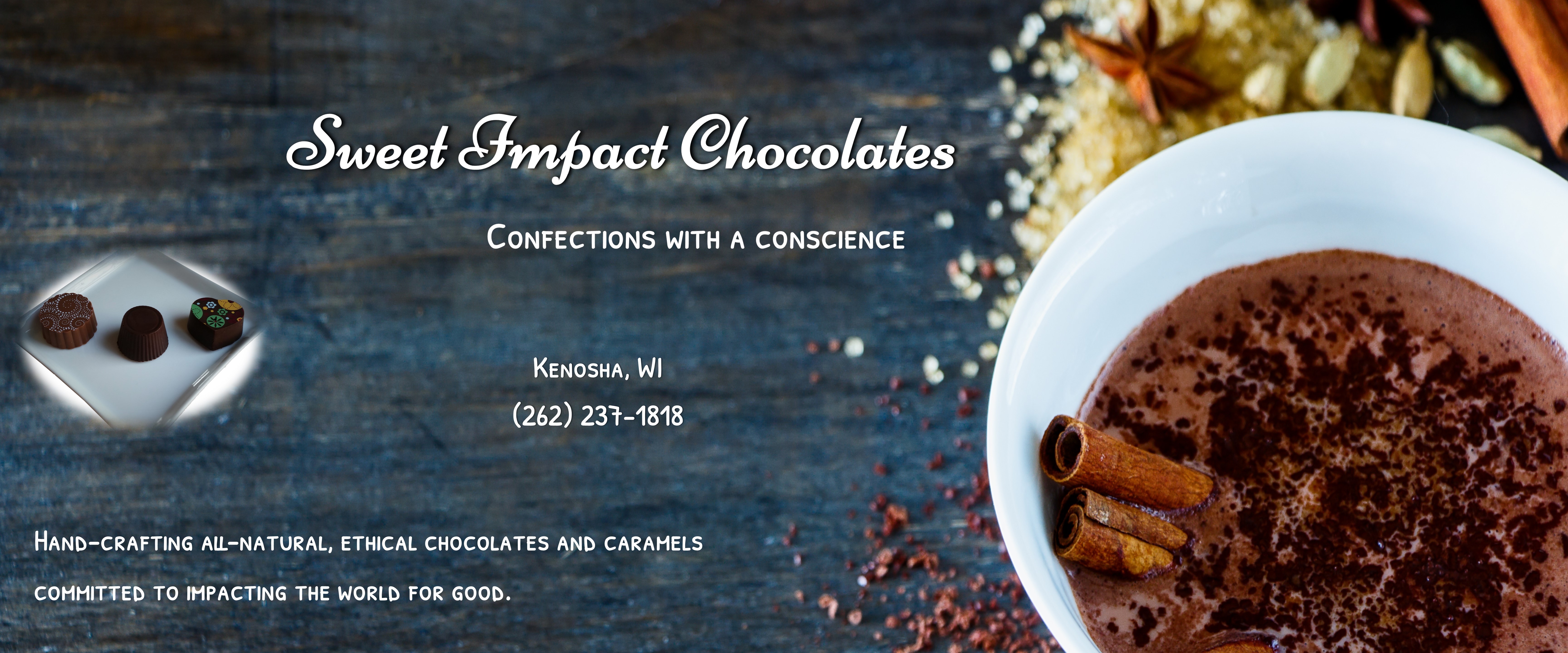
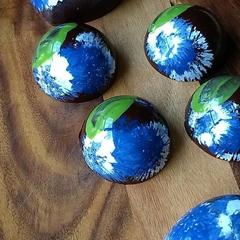
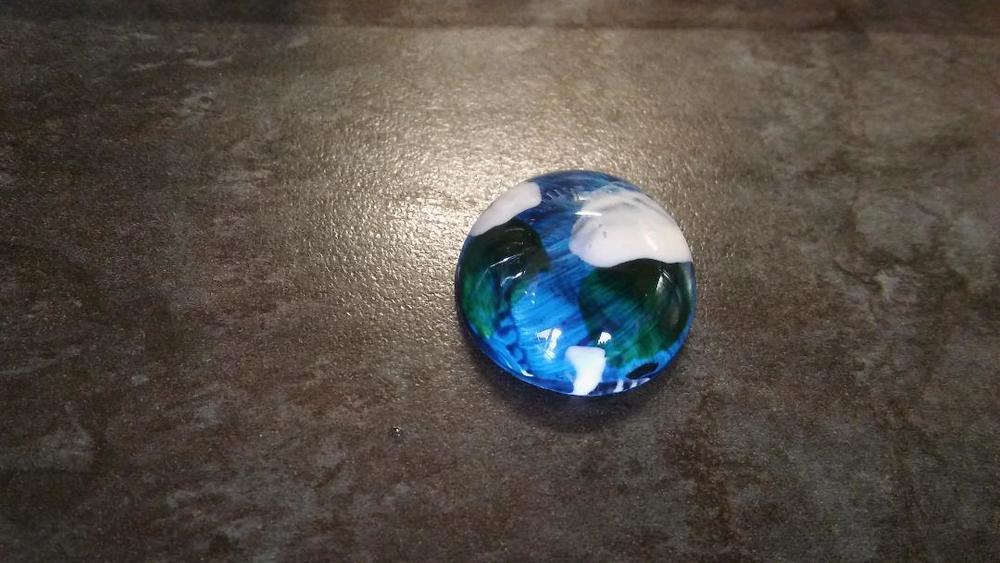
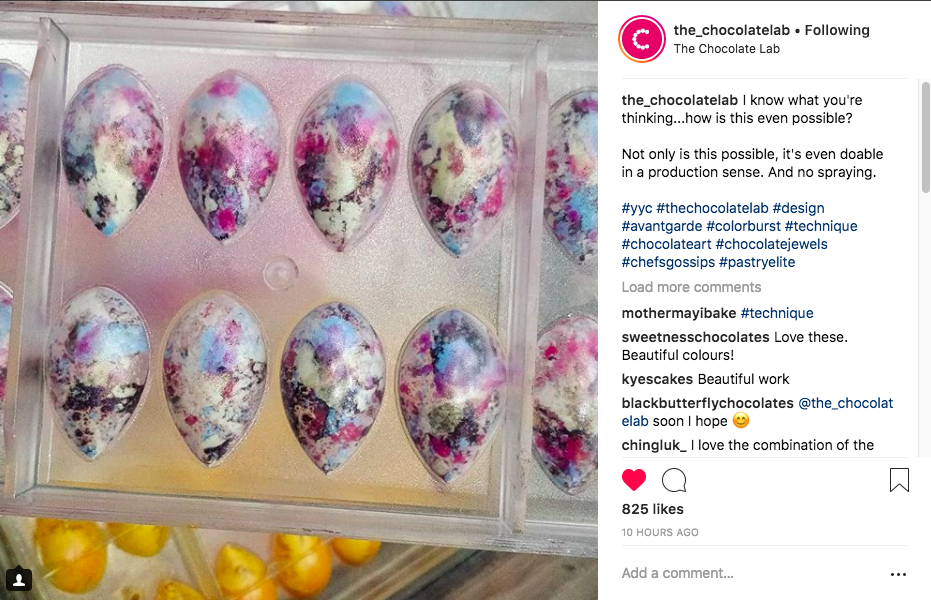

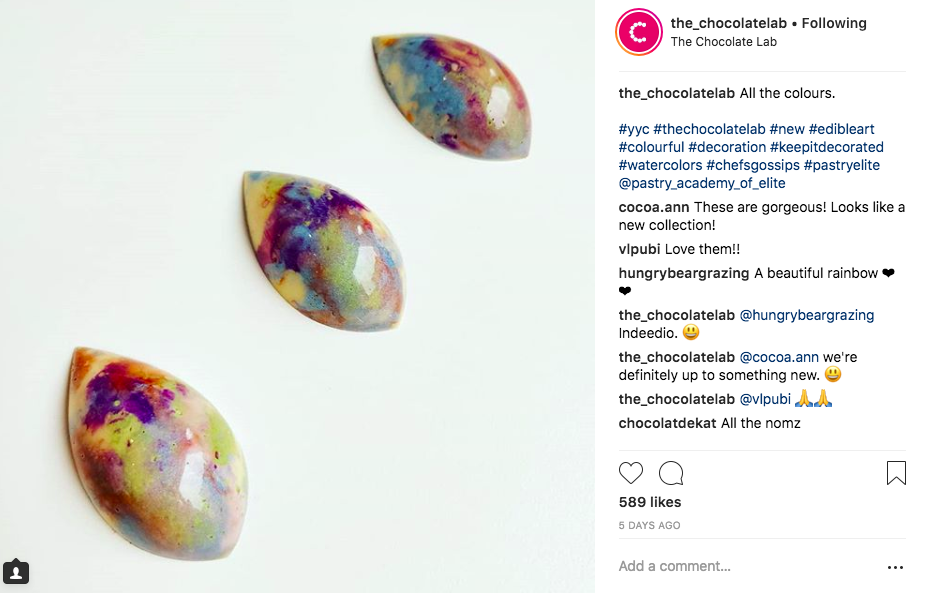
Andrey Dubovic online classes
in Pastry & Baking
Posted
That is pure genius!! Do you mind giving a ballpark on the cost to build it?